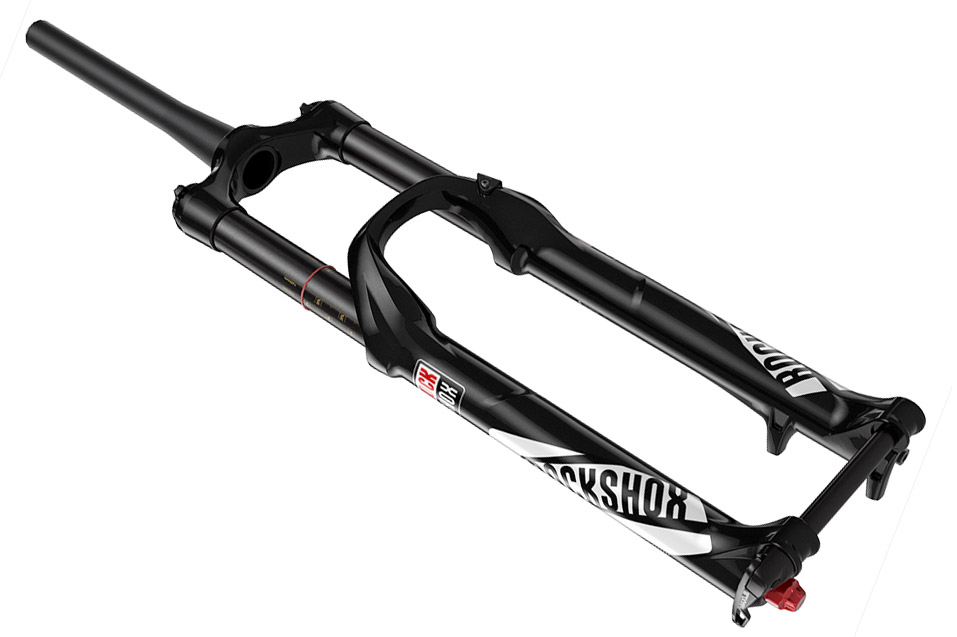We know, there’s no such thing as a stupid question. But there are some questions you might not want to ask your local shop or riding buddies. AASQ is our weekly series where we get to the bottom of your questions – serious or otherwise. Hit the link at the bottom of the post to submit your own question!
When it comes to mountain bike design, there’s a lot to digest. Modern bikes have so much going on, it’s easy to glaze over while being bombarded with numbers, standards, and why the latest super bike is better in every way.
We hear a lot about stiffness, and that’s exactly what Duytan is wondering about when he asks, “Why would I want stiffer parts up front on my 29er MTB, such as a Fox 34 or Rock Shox Pike over a Fox 32 120mm? I am told it increases confidence. What does that mean? Do flexy parts have an increased risk of OTB?”
That’s a great question as increased front end stiffness is often touted as a benefit on modern trail bikes, but rarely explained in depth. For starters, we need to differentiate between chassis stiffness and suspension “stiffness”. Often, forks that are set up with a firm compression setting or high air pressure are referred to as “stiff”, but this is not the stiffness we’re going to talk about.
Instead, we’ll focus on chassis stiffness which is how the fork resists twisting, and flexing side to side, and front to back. In general, forks like the Pike and the Fox 34 have larger stanchions and therefore larger lower castings. Modern forks also run thru axles which is a much more solid connection between the hub and the fork. Some forks like the Rock Shox Pike are even moving to larger surface areas for the hub end caps (Torque Caps) as a way to add even more stiffness at the hub. A stiffer chassis will improve both steering precision and control under braking and big impacts.
As for steering, to think of it in an extreme way – imagine your front fork was made of rubber. Now imagine going down a rough trail and trying to control your front wheel which is connected to your handlebar by a rubber fork. Doesn’t sound very fun, does it? That’s essentially what is happening on a very small scale with a more flexy (less torsionally stiff) front fork. The steering won’t be quite as precise which could lead to a less confident ride. Will the average rider notice the difference between a 32mm Fox fork and a 34mm Fox fork with the same axle system? Maybe, maybe not, but they probably would notice the difference between an entry level fork and something like a Fox 34 or Pike.
Stiffness of the fork also can affect the control of the bike under hard braking. If the fork isn’t adequately stiff front to back, heavy braking can cause the fork legs to flex or worse – shimmy under braking. This kind of response unsettles the bike under braking which is not ideal for keeping things under control. A fork that is stiffer front to back may also be a small help if you go a bit too nose heavy while landing a jump by absorbing the landing rather than bending backwards, so it theoretically could help prevent going OTB in the right instance.
Side to side stiffness is important for handling as well which is also a factor of the hub and axle combination. A stiffer fork in this direction will improve control when really pushing hard into berms and corners. Again, modern forks are so good that it will take a high level of riding to get to the point where this is noticeable, let alone an issue.
As for the answer to your question, stiffer is better at the front – to a point. When pushing a bike to the ragged edge, increased stiffness at the fork will yield better control and handling, but there is a such thing as too much stiffness up front. Fortunately, that’s not really an issue with the current crop of trail and enduro suspension forks.
Will a stiffer fork increase your confidence? It may to a small degree, but unless your current fork is a cheap model with a 9mm quick release up front, it probably isn’t worth the upgrade just yet. If you’re really concerned about increasing your confidence and decreasing your OTB risk, you’d be far better off spending your money on a lesson or two than marginal gains in terms of a new fork.
Got a question of your own? Click here to use the AASQ form, or find the link under the Contact menu header up top anytime a question pops into your mind!

